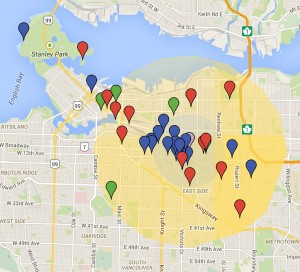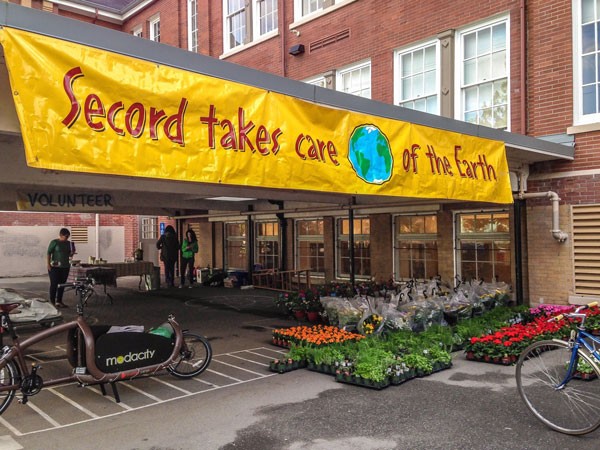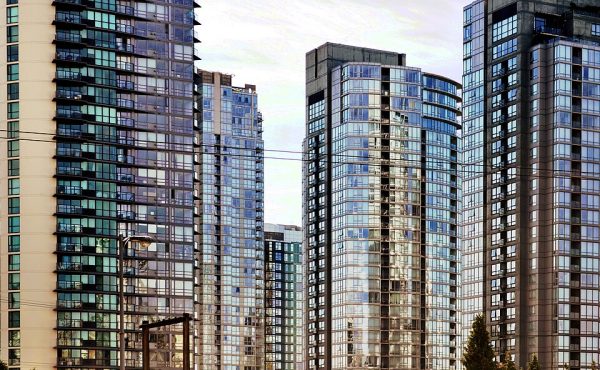
Each year, the Parent Advisory Council (PAC) of the Laura Secord Elementary School – located at East Broadway and Lakewood Dr. – come together to organize and run a massive Earth Day celebration. Grade appropriate activities, workshops and presentations are planned around the same motto: “Secord Takes Care of the Earth”. Students love the hands on activities, from creating art from junk with Dr. Junkology, learning about and getting to pet the kittens of the Vancouver Orphan Kitten Rescue Association (VOKRA), and getting an education in climate change from Check Your Head. Every year is a little different, but the goal is the same – to pass on the knowledge of the generations before to set our children up to continue the work being down to protect their environment and their future.
In the past, I have made a point of sharing my knowledge of bike maintenance, encouraging the kids to dust off their bikes, fix them up and get riding. Now that my focus has evolved to a broader look at multi-modal transportation, I decided to switch things up. Providing presentations for one grade three and one grade seven class, I spoke to the students about the importance of what I call “Connected Communities” – places where people know their neighbours, local businesses, community centres and the like, and the common routes to get there.
Unsurprisingly, when I asked these groups of East Vancouver kids, many of whom live quite close to Commercial Drive, most had a good sense of what I meant when I said connected communities, and knew why they were important. Namely, because it made the places they called home safer.
While the grade threes were still a little too young to get around on their own, the grade sevens recognized that by feeling safer, they could get around their neighbourhoods confidently and independent of their parents, and have a better sense of the best routes to get from point A to B. With that in mind, my task was to point out how easy it would be to use active transportation to get to their destination.
 Using Google Maps, I had each group identify key locations they go to on a weekly basis, be it home, sports practices, shops or any other number of places. Using their school as the landing point, I then identified how many of those locations fell within two significant perimeters: how far they could travel in twenty minutes walking and cycling, or one and a half and four kilometres, respectively. Many were surprised to see that their homes and other common destinations landed well within the cycling radius, and a large majority actually fell within the walking perimeter.
Using Google Maps, I had each group identify key locations they go to on a weekly basis, be it home, sports practices, shops or any other number of places. Using their school as the landing point, I then identified how many of those locations fell within two significant perimeters: how far they could travel in twenty minutes walking and cycling, or one and a half and four kilometres, respectively. Many were surprised to see that their homes and other common destinations landed well within the cycling radius, and a large majority actually fell within the walking perimeter.
By pointing out this reality, I then discussed with the students the many benefits of using active transportation to get around, from increased confidence and independence, but also the health benefits, both physically and mentally. Although a benefit to both grade groups, I couldn’t help feel that the grade sevens were more piqued by the knowledge that walking or cycling to school could actually benefit their academic performance.
In the end, I challenged the students to identify one destination they usually get to by car, and try getting there through active transportation. For children like my own, who walk and ride almost everywhere, I suggested they pick a destination outside of their bubble, and push themselves to go a bit further. For my daughter, who was in that grade three class, she chose one of the furthest destinations she could imagine, challenging us as much as herself – Wreck Beach! She does have a sense of humour that one, but sweetheart, challenge accepted!
My experiences with each class were quite different, but what I took away was the same – these kids willingly wanted to find ways to get around that didn’t involve getting around in the family car. We even discussed ways to combine modes for trips of a longer distance, taking the bus or Skytrain part of the way and then walking or riding the rest. It was very encouraging to see them begin to plan out routes, and for the grade sevens, recognizing that as they transition to high school, not relying on Mom and Dad to get them to school was a realistic option. The trouble would be convincing Mom and Dad.
While most grade threes still rely on their parents to get from place to place, grade sevens, being twelve and thirteen years old, are at an age that should be seeing increased independence. However, I discovered for some, that simply wasn’t the case. One student told me she wanted to be able to ride a bike, but didn’t have one, and when she suggested to her parents to instead let her take the bus to school, they wouldn’t allow it, citing the risk of abduction. For me, it was a stark contrast to my own youth, when I was taking the bus or riding my bike to meet my friends who lived in different subdivisions easily four kilometres from my home.
We discussed ways to tackle that concern, suggesting those nervous parents make that trip with their child and experience first hand how safe public transit is, and hopefully work towards earning that independence. But I was left wondering; for how many kids is this a reality? Adults who once enjoyed freedom during their own youth, now too scared to allow their children that same freedom? The irony of which being that statistically, our cities are now safer than they were twenty and thirty years ago. And with the investments being made to make streets safer for pedestrians and cyclists, the excuses not to use active transportation are now becoming few and far between.
Which brings me back to the concept of the connected community. It is the opinion of this mother, that the best thing we can do for our children and their future independence is help foster communities where we know the people and places in our neighbourhoods. Moreover, we need to show our children a different way of getting around aside from dependence on the automobile. Not just for their health, but so they themselves can feel safe navigating through the streets in their neighbourhoods and their city.
There comes a day in every child’s life when they can no longer rely on us as parents to get them from place to place, and what better legacy can we leave with them then the confidence to know how to travel independently. Speaking from experience, one of the best thing my parents ever did was let me get on that bus or bike when I was younger, and now no matter what city I’m in, I travel with confidence, strength and the knowledge that with a bit of planning, I can get almost anywhere.
***
Melissa Bruntlett is the co-founder of Modacity, a multi-service consultancy focused on inspiring healthier, happier, simpler forms of urban mobility through words, photography, and film. She lives in Vancouver, BC with her husband and two children, and enjoys walking and cycling throughout the city’s many vibrant neighbourhoods. You can see more from Melissa and Modacity on twitter @mbruntlett and @modacitylife, or on their blog modacitylife.com/blog




